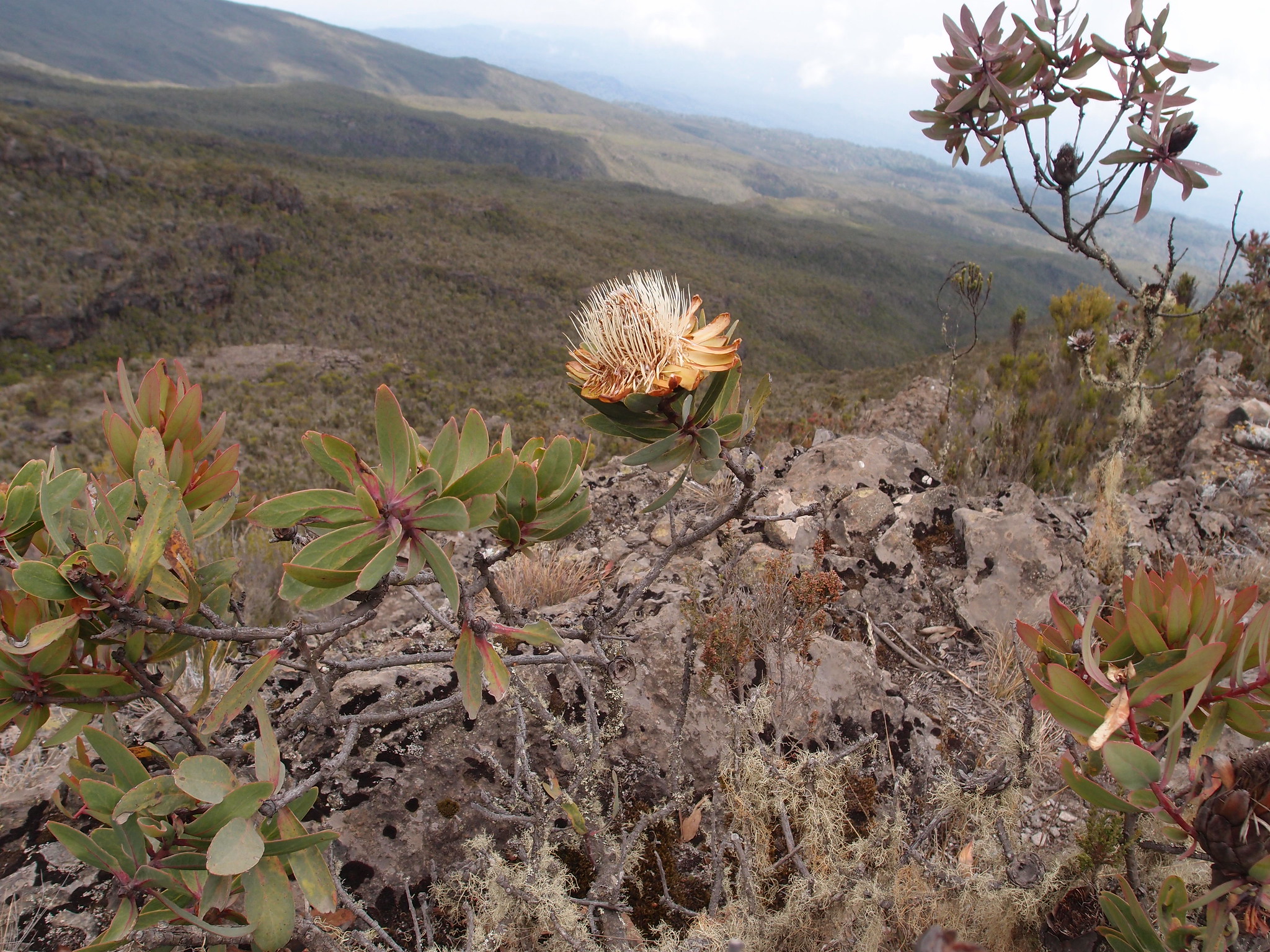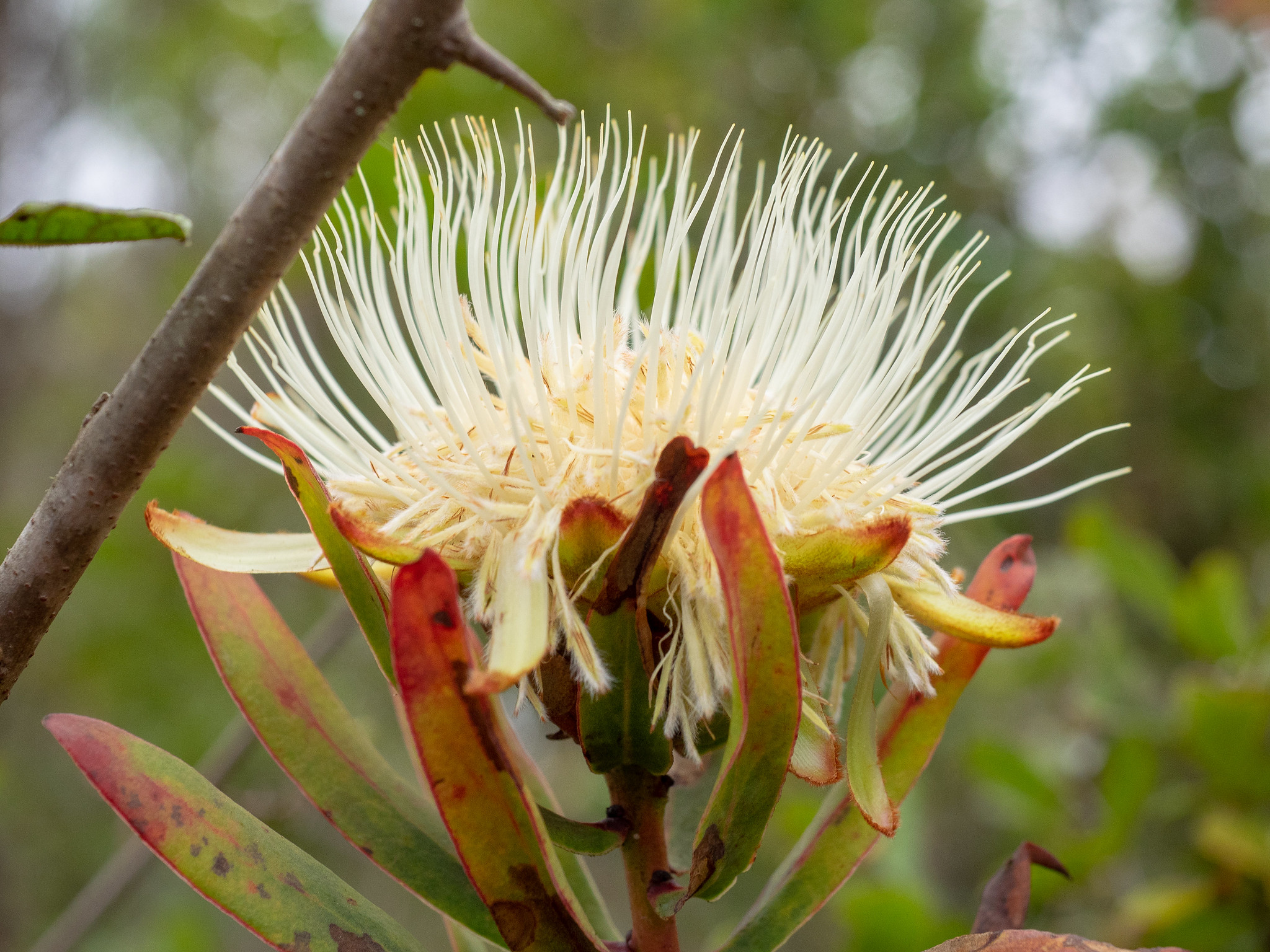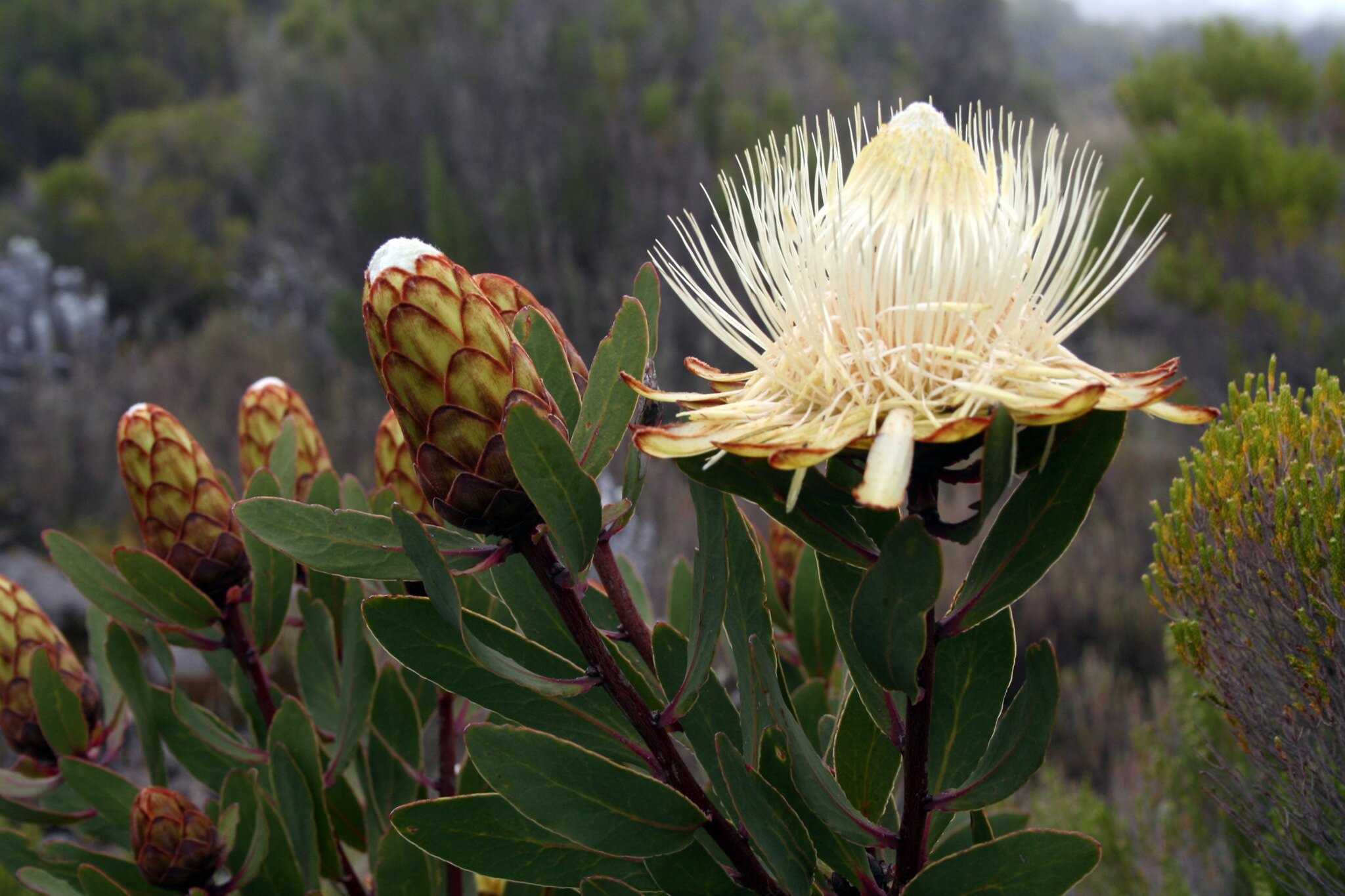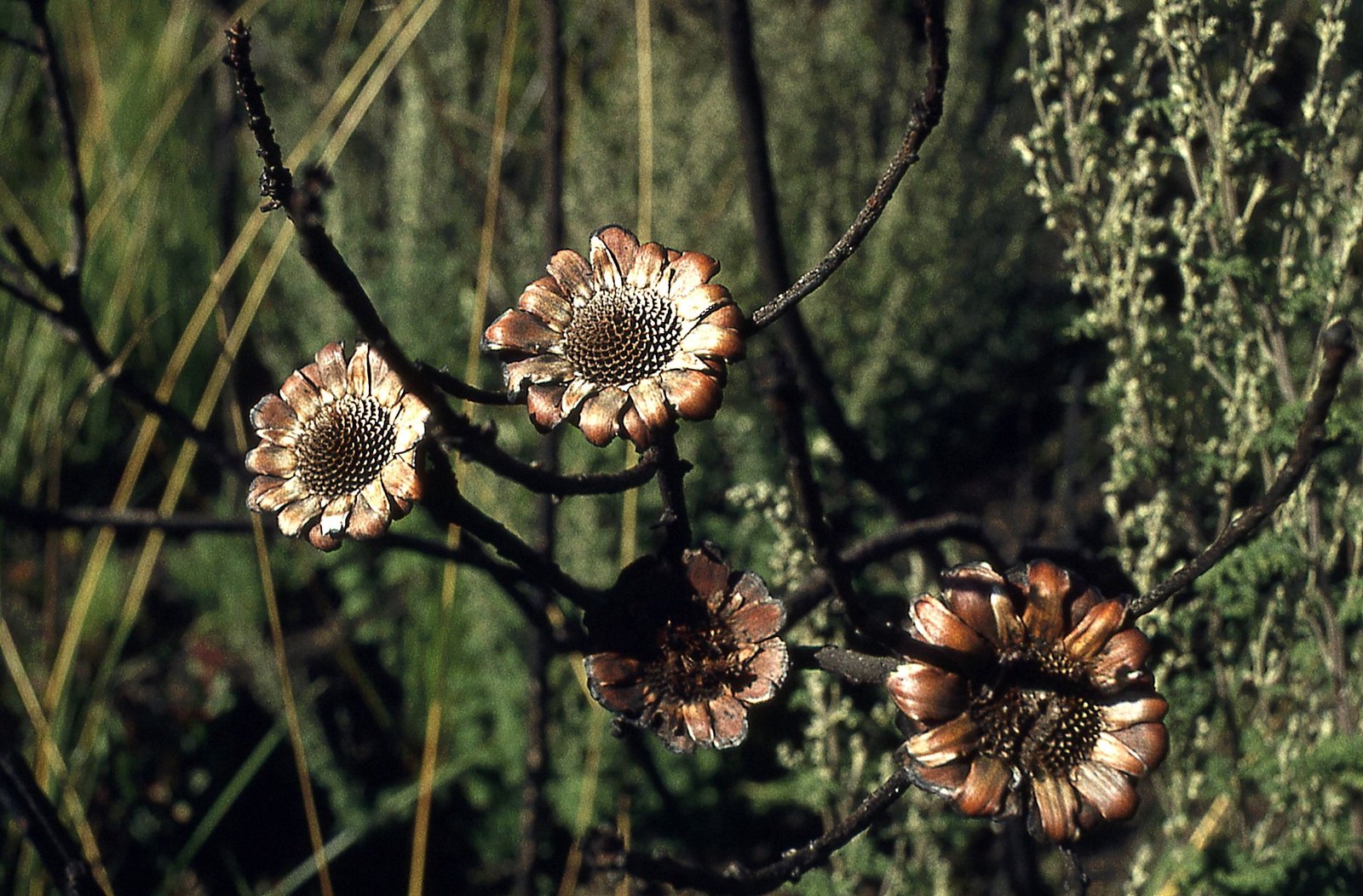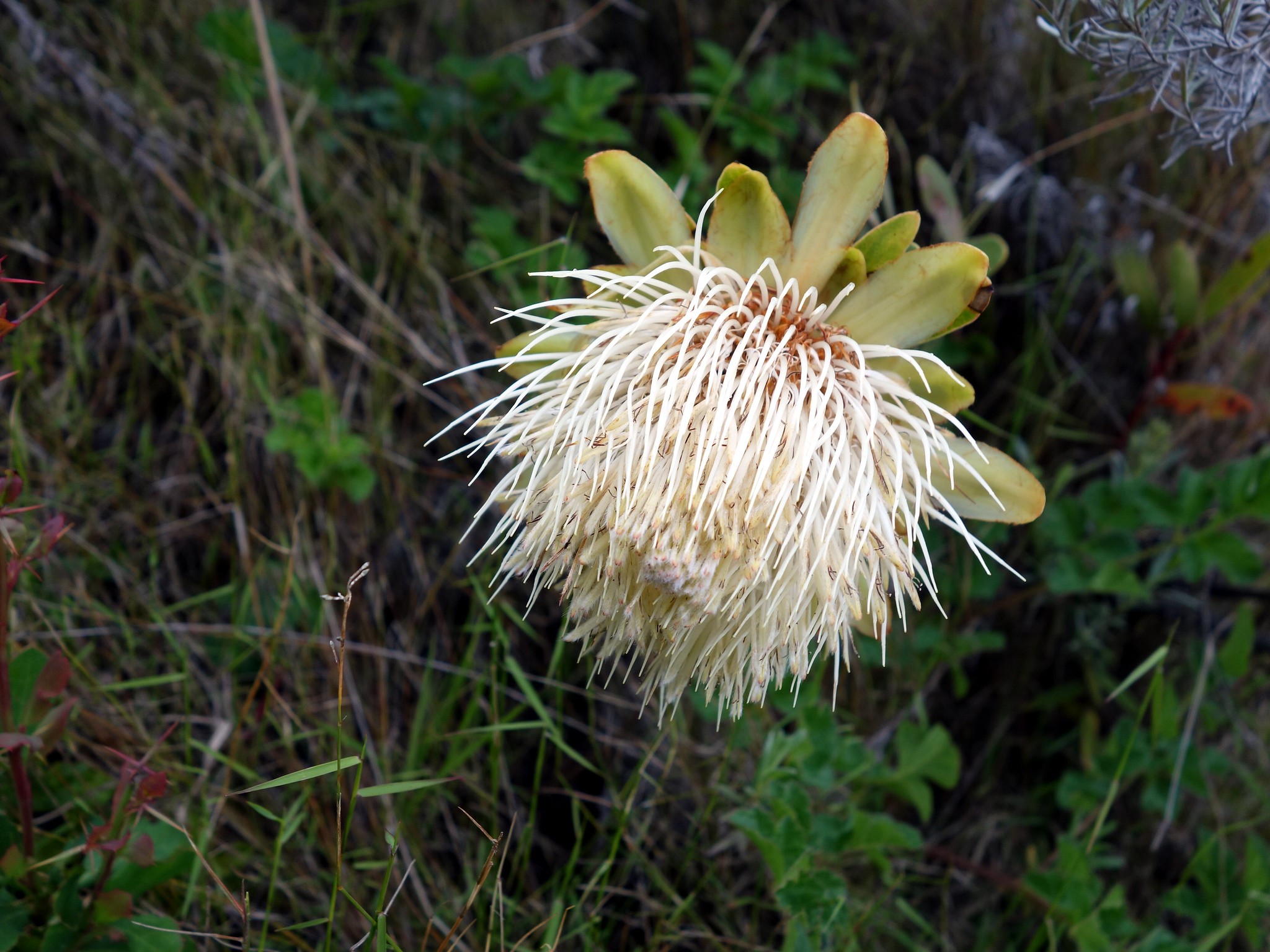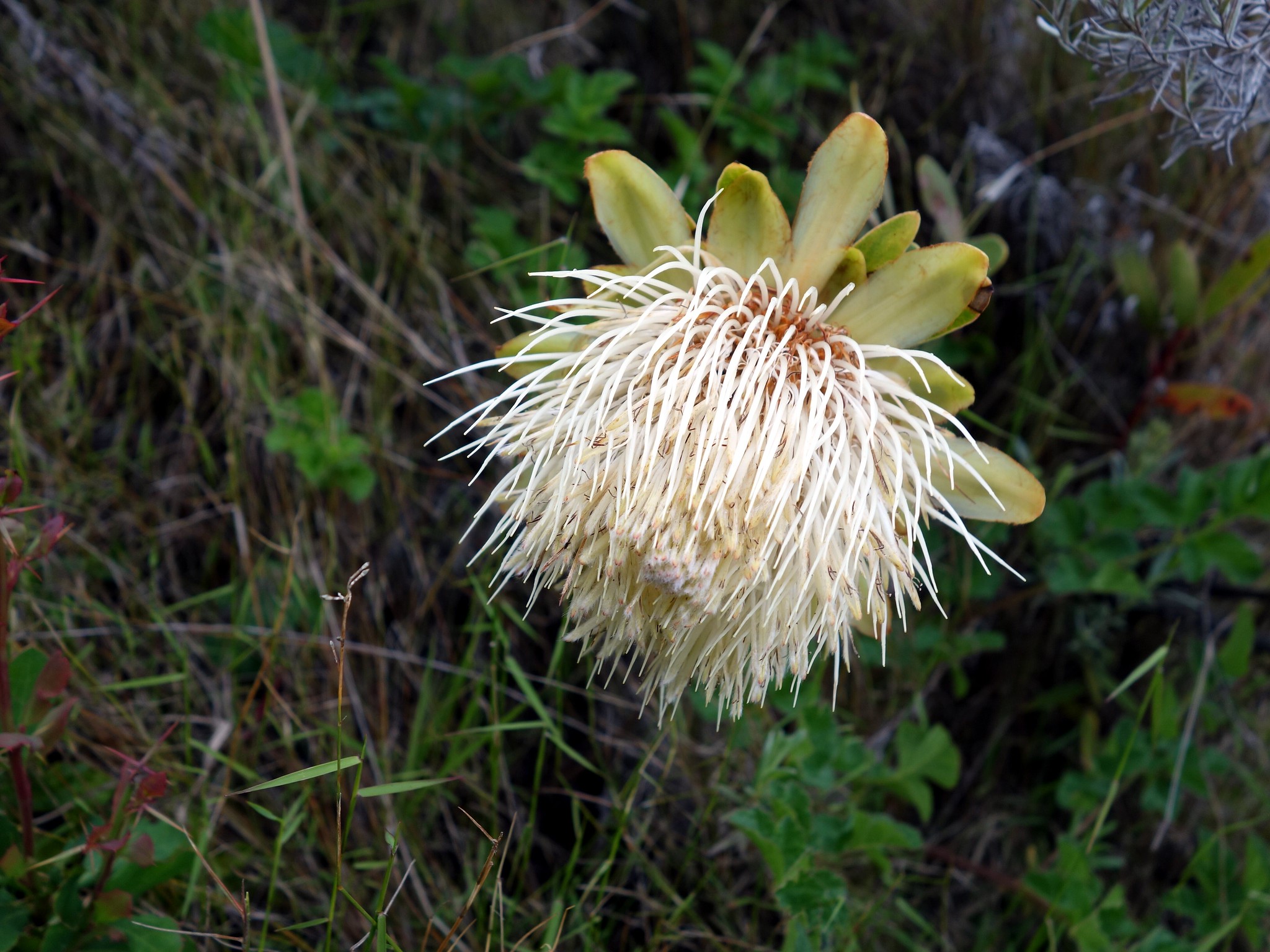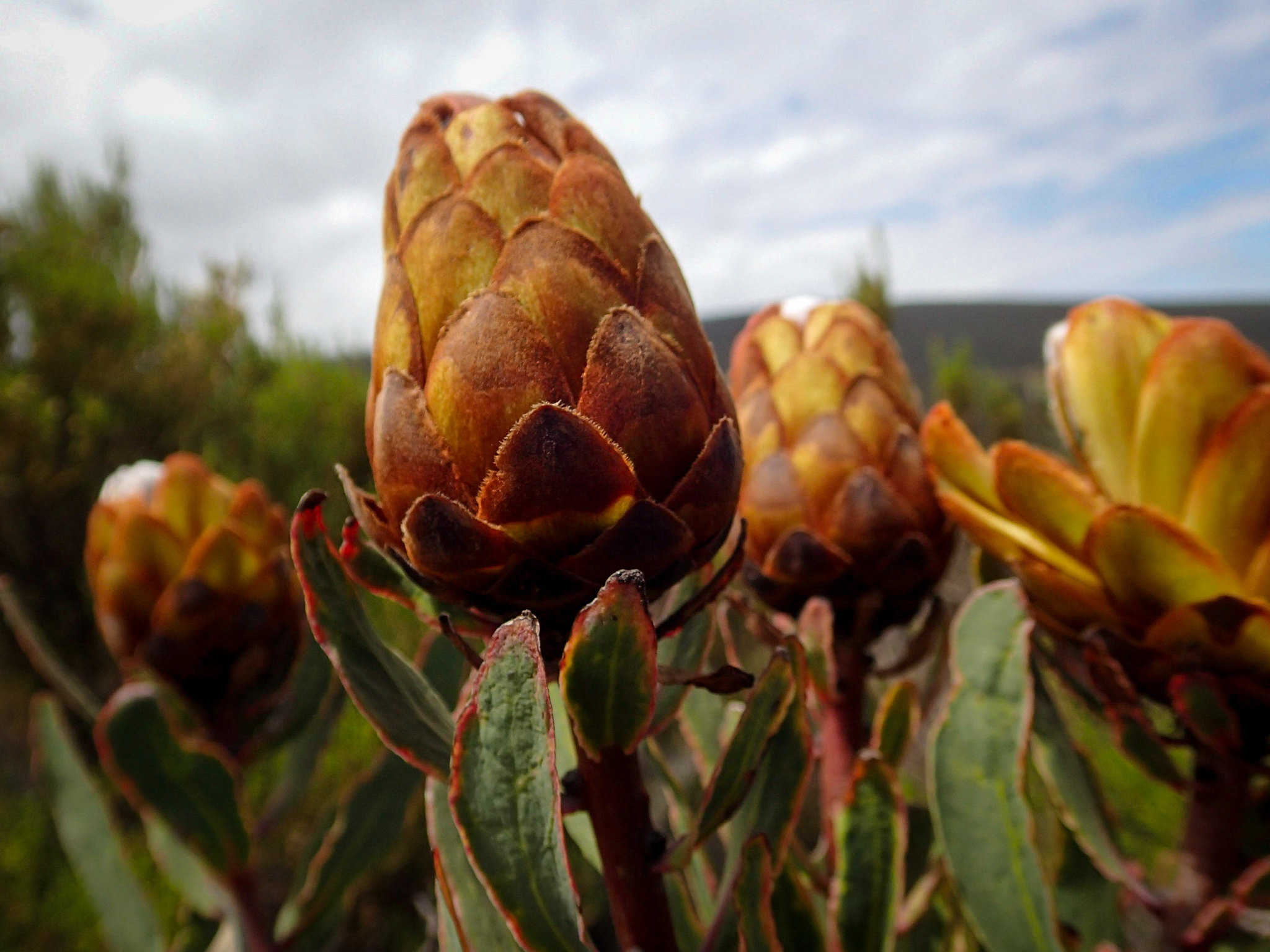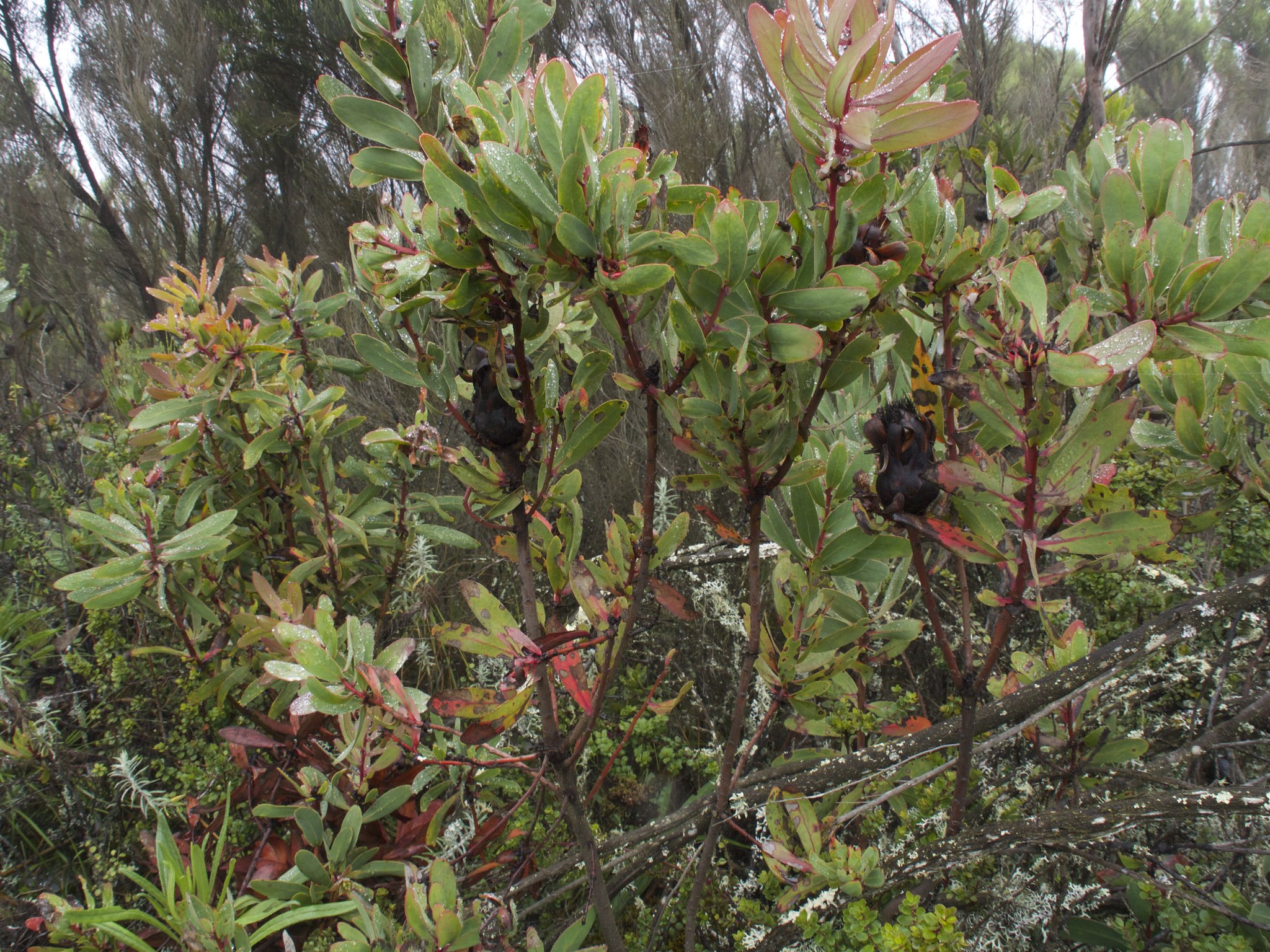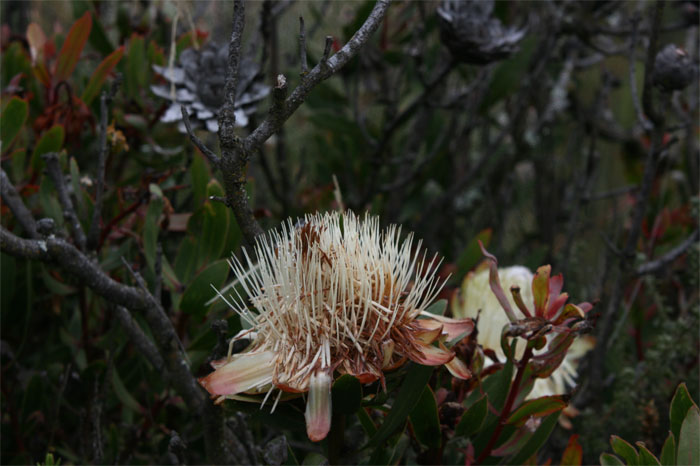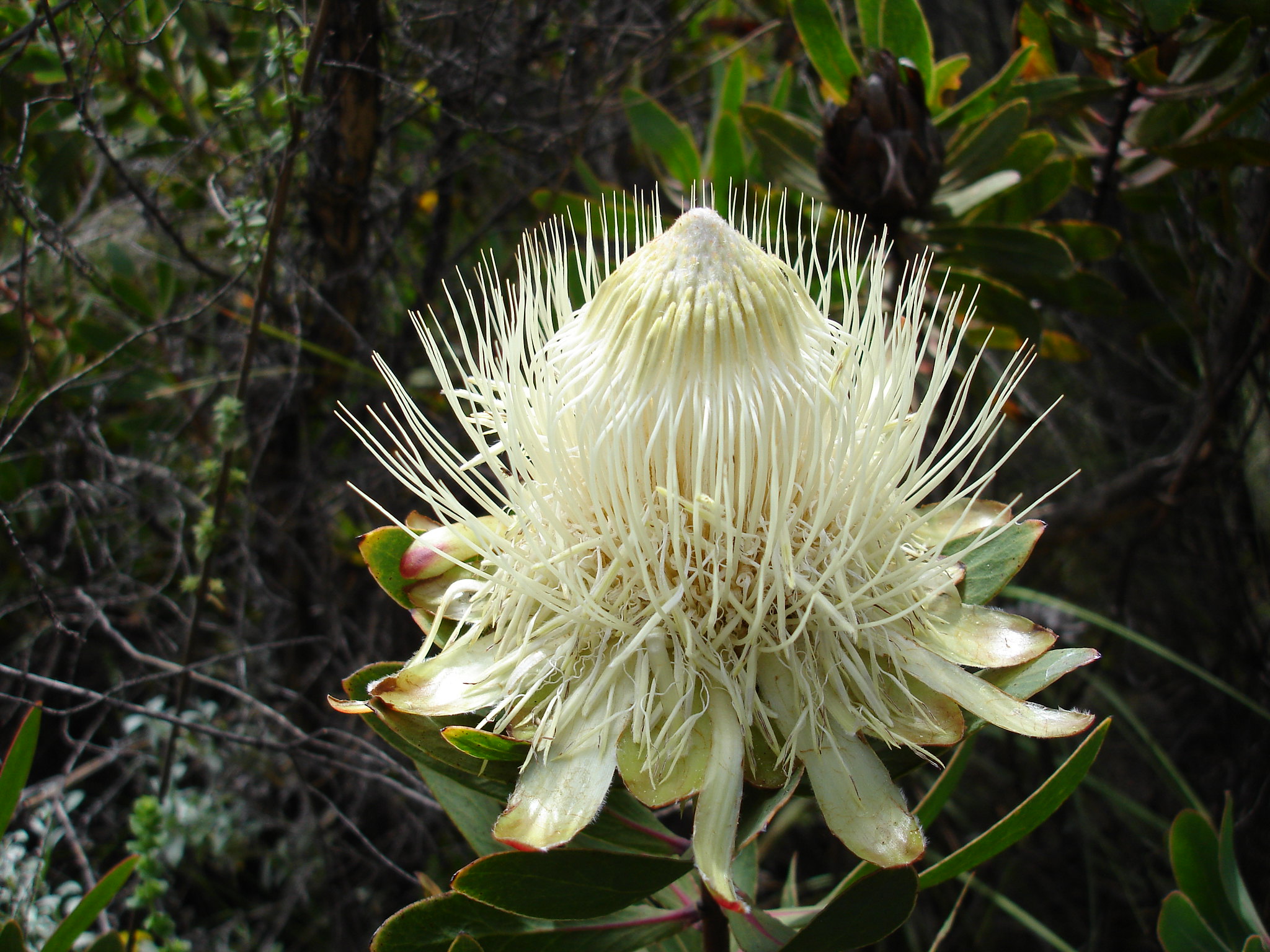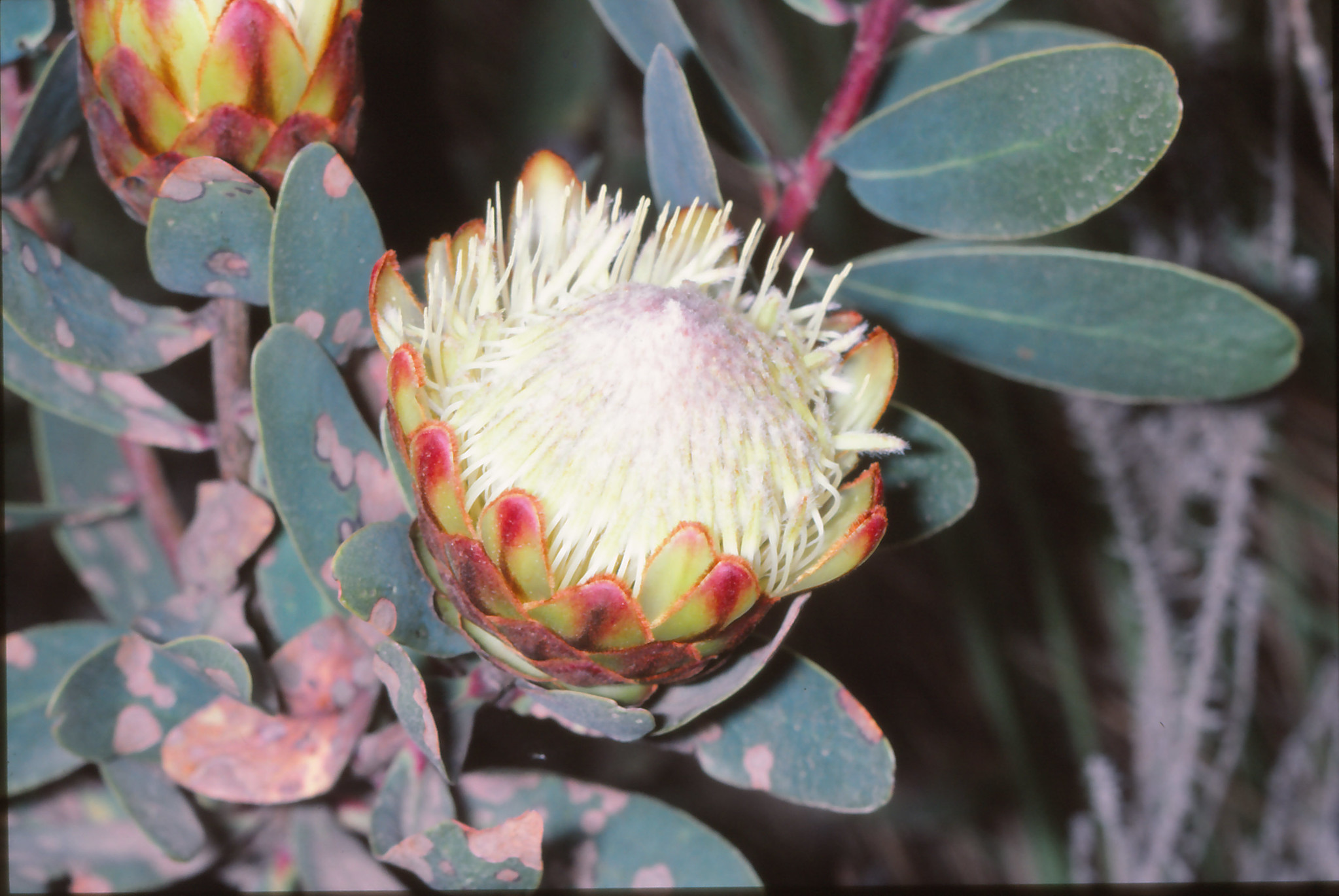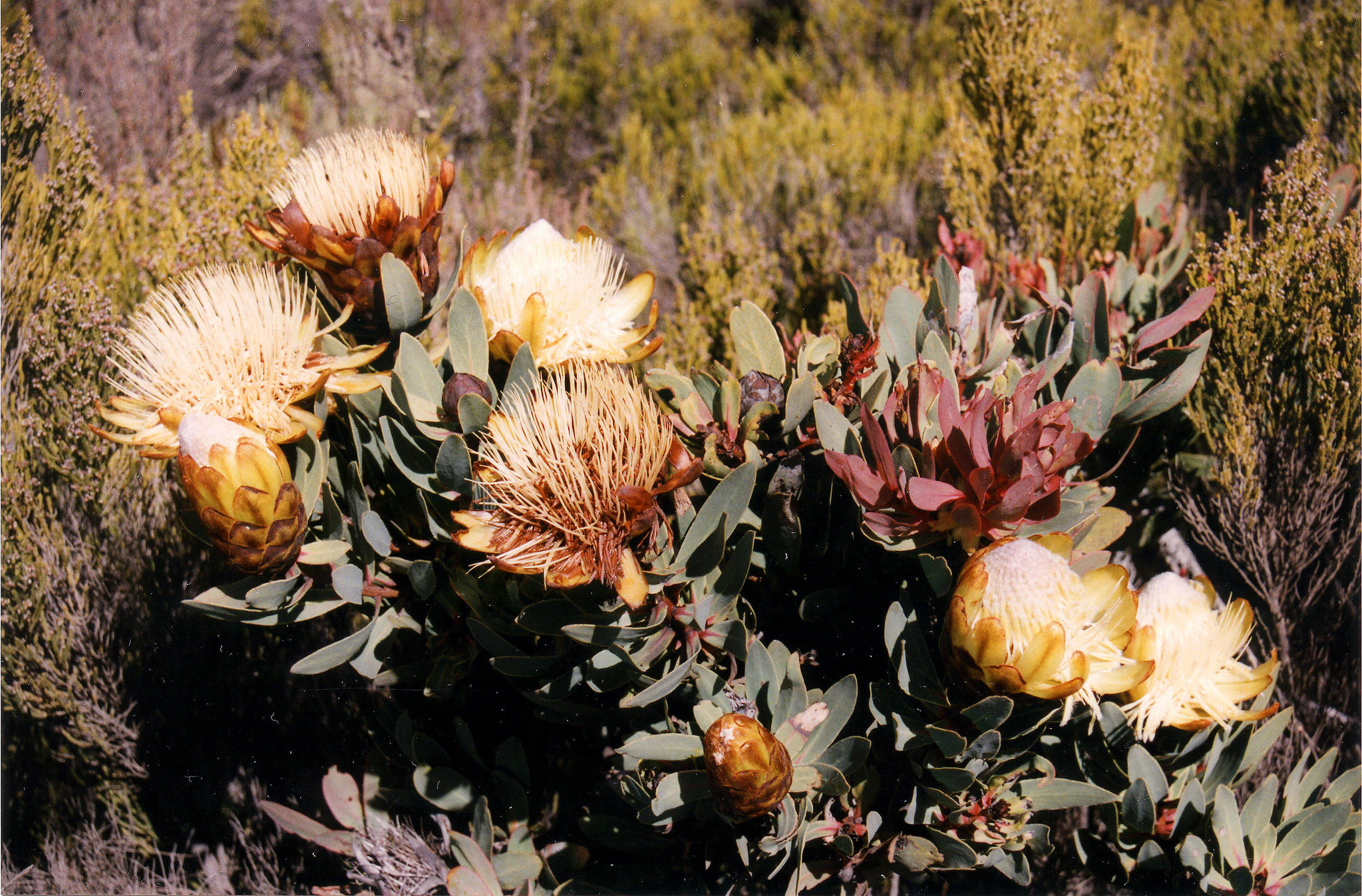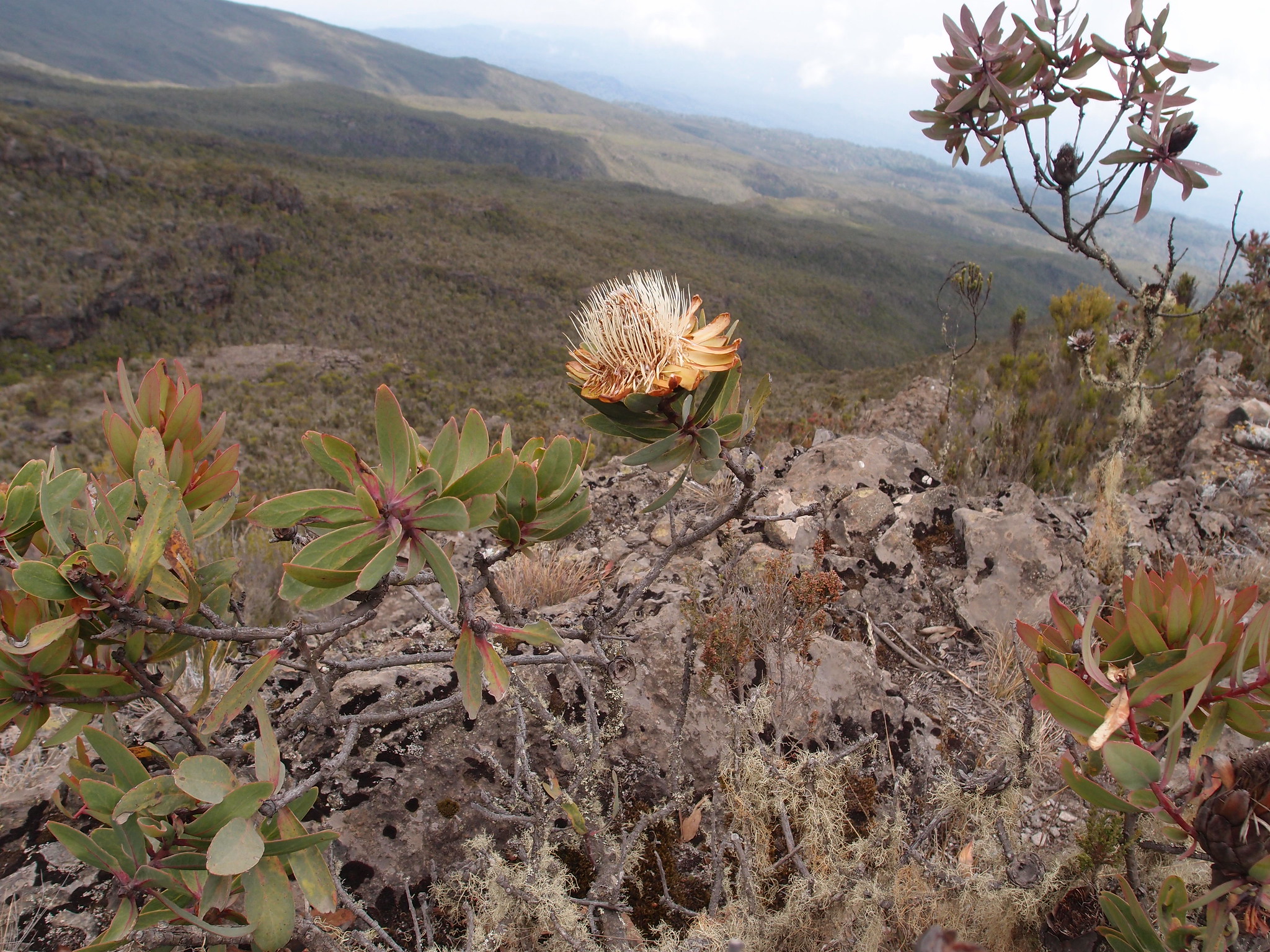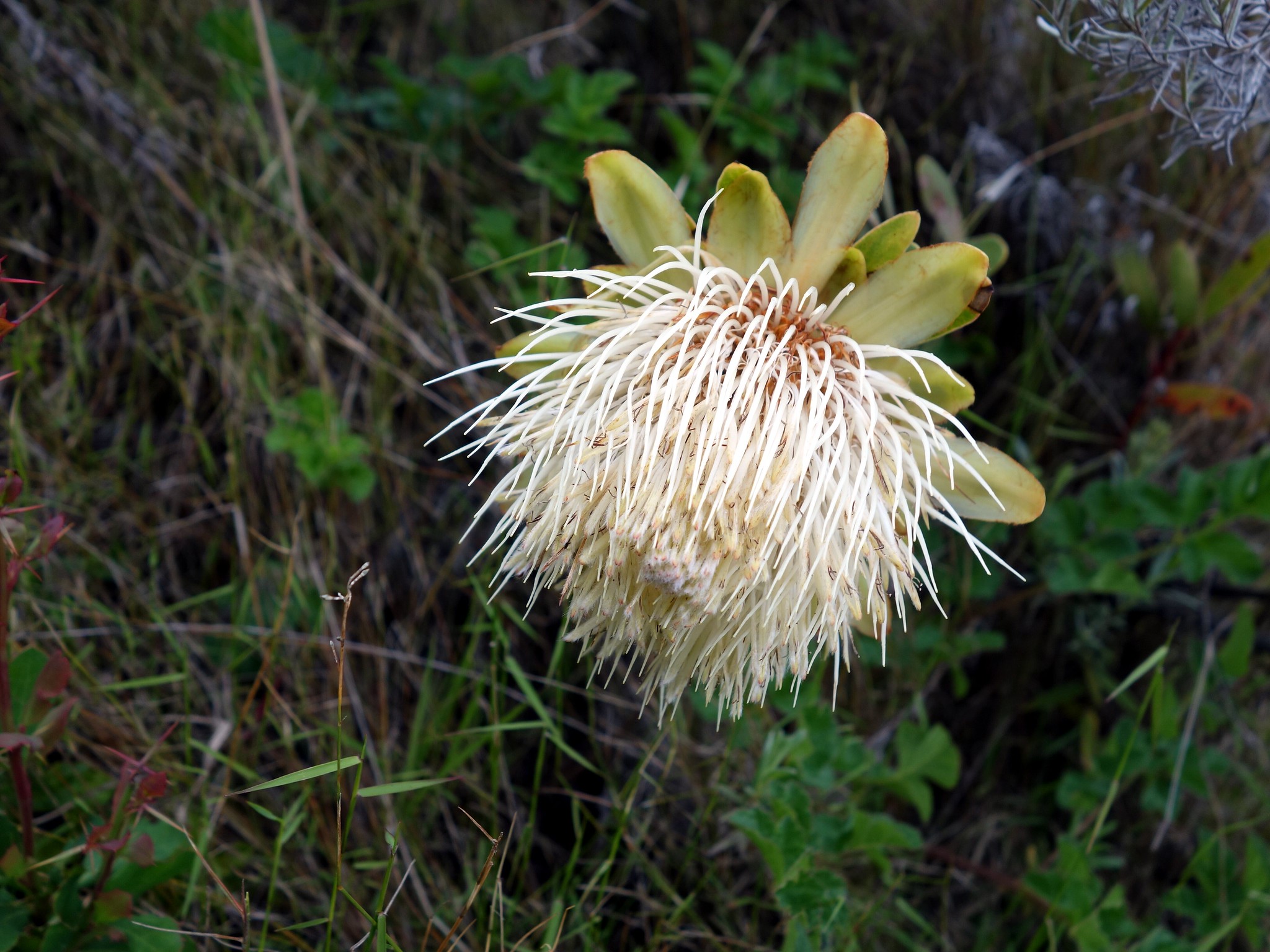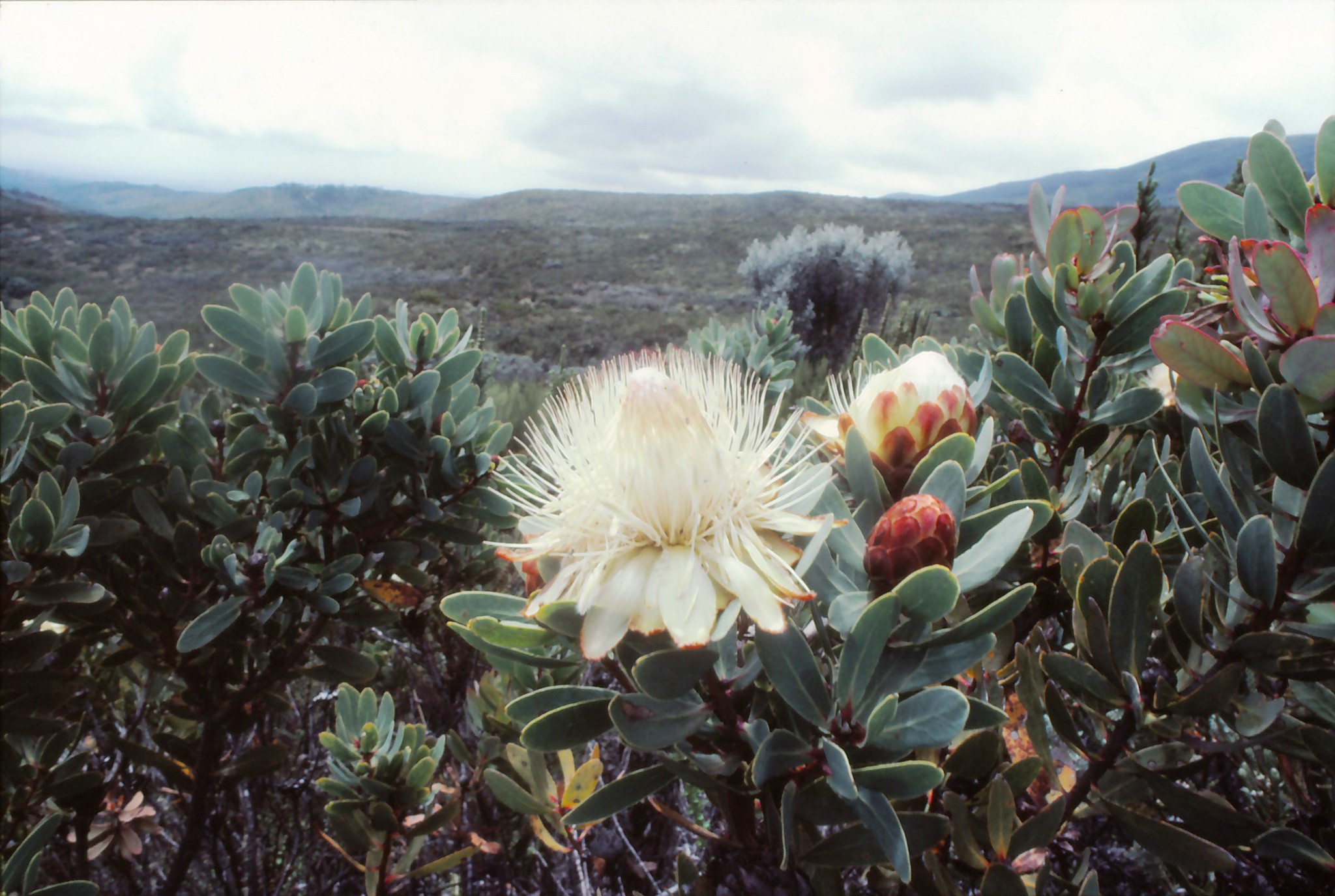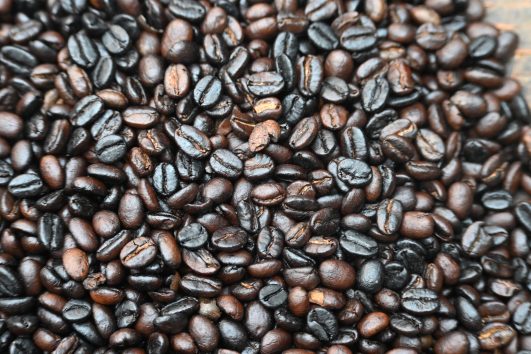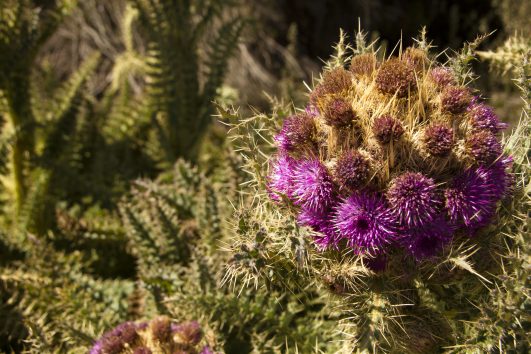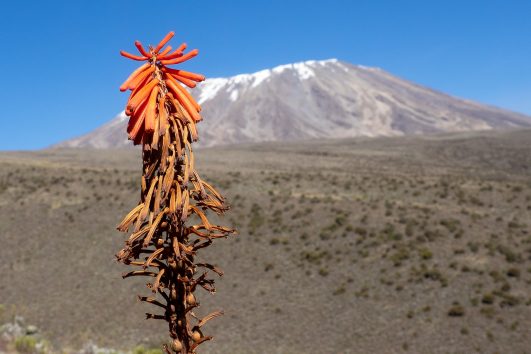Protea kilimandscharica, commonly known as the Kilimanjaro Protea, is a striking plant species found on Mount Kilimanjaro, specifically within its montane and subalpine zones.
Protea caffra subsp. kilimandscharica is a subspecies of perennial plants. It is a subspecies of Protea caffra, a species of the genus Protea and the family Proteaceae. It grows in particular in the moors of Kilimanjaro and Mount Kenya, between 2300 and 3800 m above sea level.
It is a shrub or a small tree. It can be confused with Protea gaguedi or with Protea rubrobracteata.
- Appearance: This protea species features large, cone-shaped flower heads that are quite distinctive. Its leathery leaves and robust structure make it well-suited to the harsh, rocky slopes and volcanic soils of Kilimanjaro.
- Habitat: Protea kilimandscharica thrives in the heath ecological zone of Kilimanjaro, showcasing its resilience in environments with significant elevation changes, from 2,700 to 4,600 meters (8,900 to 15,100 feet). This range includes areas where conditions are extreme, with low moisture and temperature fluctuations.
- Adaptations: Like many plants on Kilimanjaro, Protea kilimandscharica has evolved to cope with the mountain’s challenging conditions. Its robust structure helps it withstand the physical environment, while its flowering strategy might aid in pollination under limited conditions.
- Symbolism: Often cited as a symbol of endurance, this plant represents the spirit of overcoming adversity, much like the climbers who ascend Kilimanjaro. Its presence on such a notable mountain also makes it a point of interest for both botanical studies and tourists.
- Ecological Role: As part of the Proteaceae family, which includes some of the oldest flowering plants, Protea kilimandscharica contributes to the biodiversity of Kilimanjaro. Its presence might support local fauna, including pollinators adapted to high altitudes.
- Cultural and Conservation Aspects: While not as widely recognized in cultural practices as some other Kilimanjaro flora, its unique habitat and adaptation make it an important species for conservation. The plant’s survival in such a specific ecosystem underscores the importance of protecting these environments against climate change and human impact.
- Interest in Botany: Botanists and enthusiasts find Protea kilimandscharica intriguing due to its adaptations for survival at high altitudes, making it a subject for research on plant resilience and evolution.
What is Protea kilimandscharica?
Protea kilimandscharica is a species of flowering shrub belonging to the Protea genus, which is part of the larger Proteaceae family. This family is well-known for its hardy, evergreen shrubs and trees that thrive in nutrient-poor soils. Protea kilimandscharica is particularly notable for its:
- Distinctive Flower Heads: The plant produces large, showy flower heads that are typically pink to deep red. These flowers are composed of numerous small florets clustered together, surrounded by colorful bracts that give the flower its signature look. The flowers resemble a torch or flame, making them a striking sight against the mountain’s greenery.
- Leathery Leaves: The leaves of Protea kilimandscharica are thick, leathery, and dark green, which helps the plant conserve water and withstand the harsh conditions of high altitudes. These leaves are often covered with a fine layer of hair, which further reduces water loss by minimizing transpiration.
- Shrub-like Growth: The plant typically grows as a bushy shrub, reaching heights of up to 2 meters (about 6.5 feet). This compact growth form allows it to withstand the wind and cold temperatures found at higher altitudes on Kilimanjaro.
Habitat and Distribution
Protea kilimandscharica is endemic to the high-altitude regions of East Africa, particularly on Mount Kilimanjaro and Mount Kenya. It thrives in the moorland and alpine zones of these mountains, which are characterized by:
- Cool Temperatures: The high elevation of these zones provides a cool climate, with significant temperature variations between day and night. Protea kilimandscharica is well-adapted to these conditions, being able to withstand both frost and intense sunlight.
- Well-Drained, Rocky Soil: The plant grows best in well-drained, rocky soils, which are common on Kilimanjaro’s slopes. The volcanic soil is rich in minerals but poor in organic matter, creating a challenging environment that Protea kilimandscharica is uniquely suited to handle.
- Open Moorlands: The open, sunlit moorlands provide the ideal conditions for Protea kilimandscharica to flourish. The plant is commonly found at altitudes between 2,700 to 4,000 meters (8,900 to 13,100 feet), where it forms part of the characteristic vegetation of these high-altitude landscapes.
Adaptations for Survival
Protea kilimandscharica has evolved several adaptations that enable it to thrive in the challenging conditions of Kilimanjaro:
- Drought Resistance: The leathery leaves and deep root systems of Protea kilimandscharica help it conserve water, allowing it to survive in the dry, well-drained soils of Kilimanjaro’s high-altitude zones.
- Cold Tolerance: The plant can withstand the cold temperatures of Kilimanjaro’s moorlands, which often dip below freezing at night. Its compact growth form and dense foliage help protect it from frost damage.
- Sunlight Adaptation: The high levels of ultraviolet radiation at high altitudes can be harmful to many plants, but Protea kilimandscharica is well-adapted to this environment. Its thick, hairy leaves reflect sunlight, reducing the risk of sunburn and water loss.
Additional information
| Habitat | Heath & Moorland Zone |
|---|

